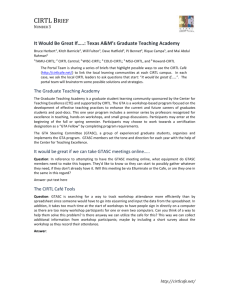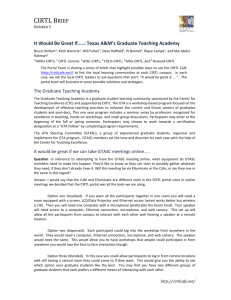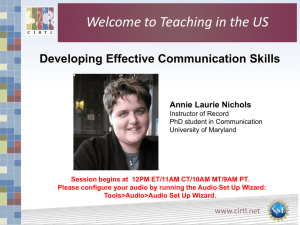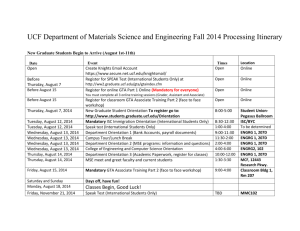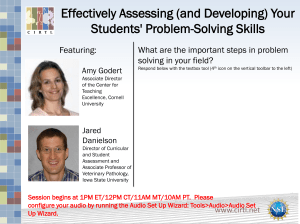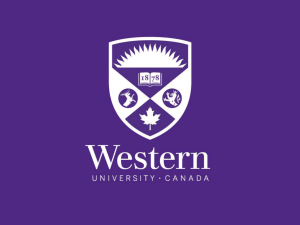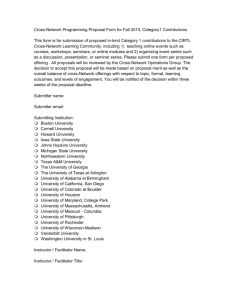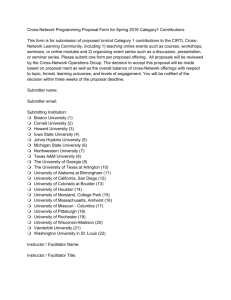CIRTL NETWORK
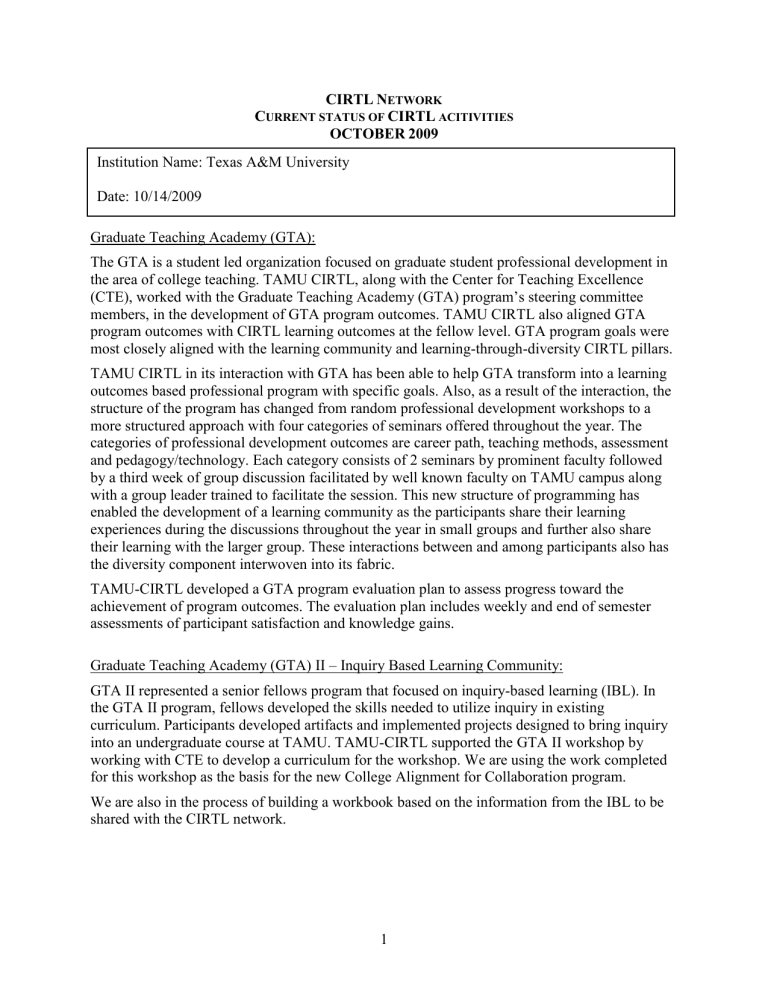
CIRTL N
ETWORK
C
URRENT STATUS OF
CIRTL
ACITIVITIES
OCTOBER 2009
Institution Name: Texas A&M University
Date: 10/14/2009
Graduate Teaching Academy (GTA):
The GTA is a student led organization focused on graduate student professional development in the area of college teaching. TAMU CIRTL, along with the Center for Teaching Excellence
(CTE), worked with the Graduate Teaching Academy (GTA) program’s steering committee members, in the development of GTA program outcomes. TAMU CIRTL also aligned GTA program outcomes with CIRTL learning outcomes at the fellow level. GTA program goals were most closely aligned with the learning community and learning-through-diversity CIRTL pillars.
TAMU CIRTL in its interaction with GTA has been able to help GTA transform into a learning outcomes based professional program with specific goals. Also, as a result of the interaction, the structure of the program has changed from random professional development workshops to a more structured approach with four categories of seminars offered throughout the year. The categories of professional development outcomes are career path, teaching methods, assessment and pedagogy/technology. Each category consists of 2 seminars by prominent faculty followed by a third week of group discussion facilitated by well known faculty on TAMU campus along with a group leader trained to facilitate the session. This new structure of programming has enabled the development of a learning community as the participants share their learning experiences during the discussions throughout the year in small groups and further also share their learning with the larger group. These interactions between and among participants also has the diversity component interwoven into its fabric.
TAMU-CIRTL developed a GTA program evaluation plan to assess progress toward the achievement of program outcomes. The evaluation plan includes weekly and end of semester assessments of participant satisfaction and knowledge gains.
Graduate Teaching Academy (GTA) II – Inquiry Based Learning Community:
GTA II represented a senior fellows program that focused on inquiry-based learning (IBL). In the GTA II program, fellows developed the skills needed to utilize inquiry in existing curriculum. Participants developed artifacts and implemented projects designed to bring inquiry into an undergraduate course at TAMU. TAMU-CIRTL supported the GTA II workshop by working with CTE to develop a curriculum for the workshop. We are using the work completed for this workshop as the basis for the new College Alignment for Collaboration program.
We are also in the process of building a workbook based on the information from the IBL to be shared with the CIRTL network.
1
Marketing:
Two informational brochures were developed to assist with the marketing and publicity of
TAMU CIRTL. One brochure focuses solely on the purpose and pillars of the CIRTL Network while the other brochure takes an integrative approach and provides information about TAMU
CIRTL, the CTE and the GTA. The color brochures are three fold and contain information about program goals, available resources, and contact information.
Management:
Working with the Center for Teaching Excellence, we mapped CIRTL program outcomes to outcomes that TAMU stakeholders seek to achieve in their professional development programs.
The work sought to define stages of outcomes that are consistent with the CIRTL Fellows,
Practitioner and Scholar levels.
* PROGRAM DEVELOPMENT IN PROGRESS
College Alignment for Collaboration (CAC):
The College Alignment for Collaboration (CAC) is a new discipline-based professional development program for graduates-through-faculty that will be customized for departments and colleges. This new program offers good opportunities to incorporate CIRTL network activities as well as take advantage of the diversity of the network. This program and its activities are rooted in the GTA II program. In the coming semester we plan to deliver one workshop focused on teaching-through-inquiry.
Post-Doc Professional Development Program:
Given the new emphasis on providing post doctoral researchers with a quality mentoring experience as a condition of receiving funding for such positions through either NIH or the NSF, there has emerged a target of opportunity on the TAMU campus to assist in providing some central resources for such activities and in so doing to incorporate the CIRTL pillars as part of the program. TAMU CIRTL is collaborating with the Office of Proposal Development (OPD),
Office of Graduate Studies (OGS) and Office of Vice president for Research (VPR) to develop this professional development program for post-docs in STEM disciplines.
This program will consist of three components:
1. Teaching and learning: A set of workshops will be put together using renowned faculty on campus, and also collaborating with CTE and GTA if and when required.
2. Grant writing and proposal development: Workshops offered by the Office of Proposal
Development will be incorporated into the program to avoid duplication.
3. Conflict management and professional practices
2
